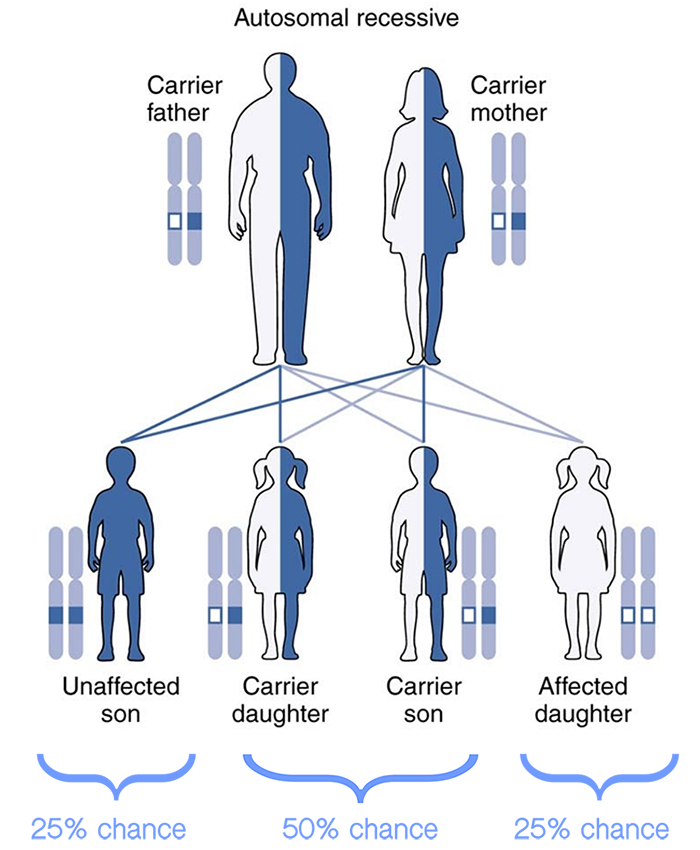What is ADSSL1 Myopathy?
ADSSL1 Myopathy is a rare, inherited disease that causes progressive muscle weakness. The disease is caused by defects of the ADSSL1 - ADENYLOSUCCINATE SYNTHASE-LIKE 1 gene. This gene is important in the purine metabolism pathways; purines such as adenylosuccinate are important in energy metabolism in the muscle. It is expressed in muscle and heart. In this disorder the defect of the ADSSL1 enzyme disrupts the functioning of the purine nucleotide cycle pathway, and interferes with normal muscle function.
ADSSL1 Myopathy is characterized by generalized weakness in childhood, predominant distal muscle weakness in adolescence, facial muscle weakness, mildly elevated CK levels, and the presence of rimmed vacuoles or nemaline rods on muscle pathology. Diffuse weakness is first noticed during childhood, progressing to distal muscle weakness in adolescence. Imaging reveals fatty infiltrates in atrophied muscles of the tongue and upper and lower limbs. Muscle biopsy shows fiber size variation, increased internal nuclei, fiber splitting, rimmed vacuoles, and focal endomysial fibrosis.
One of the first signs of the disease includes inability to climb stairs or getting up. As the disease progresses, it usually leads to physical disability. It is also known to impact the heart and lungs in some cases.
ADSSL1 Myopathy is a very rare disease and has been found reported in populations worldwide but is more common in people with Asian Origin. It was first discovered in Korea in 2016. A study in Japan in 2020 found more patients in Japan. Like many other rare diseases, ADSSL1 Myopathy is under-diagnosed and many people with the disease remain undiagnosed.
ADSSL1 Myopathy has also been known as
MPD5 (Distal Myopathy 5). To facilitate diagnosis, ADSSL1 myopathy is the preferred name.
What Causes ADSSL1 Myopathy?
ADSSL1 Myopathy is caused by a genetic defect of the ADSSL1 gene. The defect disrupts the functioning of the purine nucleotide cycle metabolic pathway and interferes with normal muscle function.
How Can I Get Tested?
If you have family members affected with ADSSL1 Myopathy, you can get tested by contacting a Genetics specialist. Testing can be performed with a painless cheek swab or collection of saliva.
What are Some of the Symptoms?
Symptoms of the disease begin typically between the ages of 12 and 15. Below is a list of common symptoms:
- Difficulty in climbing stairs
- Difficulty in getting up from a seated position
- Difficulty in running
- Loss of balance
- Weakness in hands and shoulders
- Distal upper and lower limb weakness
- Proximal muscle weakness in lower limbs
- Foot drop
- Frequently tripping
- Change in gait
- Inability to walk
- Heart muscle weakness
- Reduced lung volume
- Difficulty in chewing and swallowing food
If you experience any of the symptoms listed, you should be evaluated by doctors specializing in Neuromuscular Diseases or Medical Genetics.
How Do I Know if I am a Carrier?
ADSSL1 Myopathy is an autosomal recessive disorder, which means that the parents of someone affected by ADSSL1 Myopathy are both carriers of the disease. Carriers are not affected by the disease, which means that they don’t show symptoms of the disease. But when two carriers have a child, there is a 25% chance with each pregnancy of having a child who has ADSSL1 Myopathy, a 50% chance that each child will be a carrier like his or her parents (and not have the disease), and a 25% chance that each child will not carry any mutation for the disease (meaning that he or she will not be a carrier nor will he or she have the disease). Please refer to the figure below.
 Autosomal Recessive Inheritance (Source: Wikimedia)
Autosomal Recessive Inheritance (Source: Wikimedia) It is possible to be tested at any time, but it is particularly important prior to becoming pregnant or during early pregnancy.
What if I want to start a family and I am diagnosed?
The ADSSL1 gene is associated with autosomal recessive distal myopathy 5 (MPD5)
Biological relatives have a chance of being a carrier for or being at risk for autosomal recessive ADSSL1-related conditions. Testing should be considered if clinically appropriate. The chance of having a child with autosomal recessive ADSSL1-related conditions depends on the carrier state of the individual’s partner.
What if I want to start a family and I am a carrier?
This is an important decision that you, your partner, and your doctor need to discuss to decide on the best option for you.
Is There a Treatment or Cure?
Currently there is no approved treatment for ADSSL1 Myopathy. However, we are on a mission to find a treatment. Please refer to our research page for more details on this.
If you or any of your family members are affected by ADSSL1 myopathy, please register here.